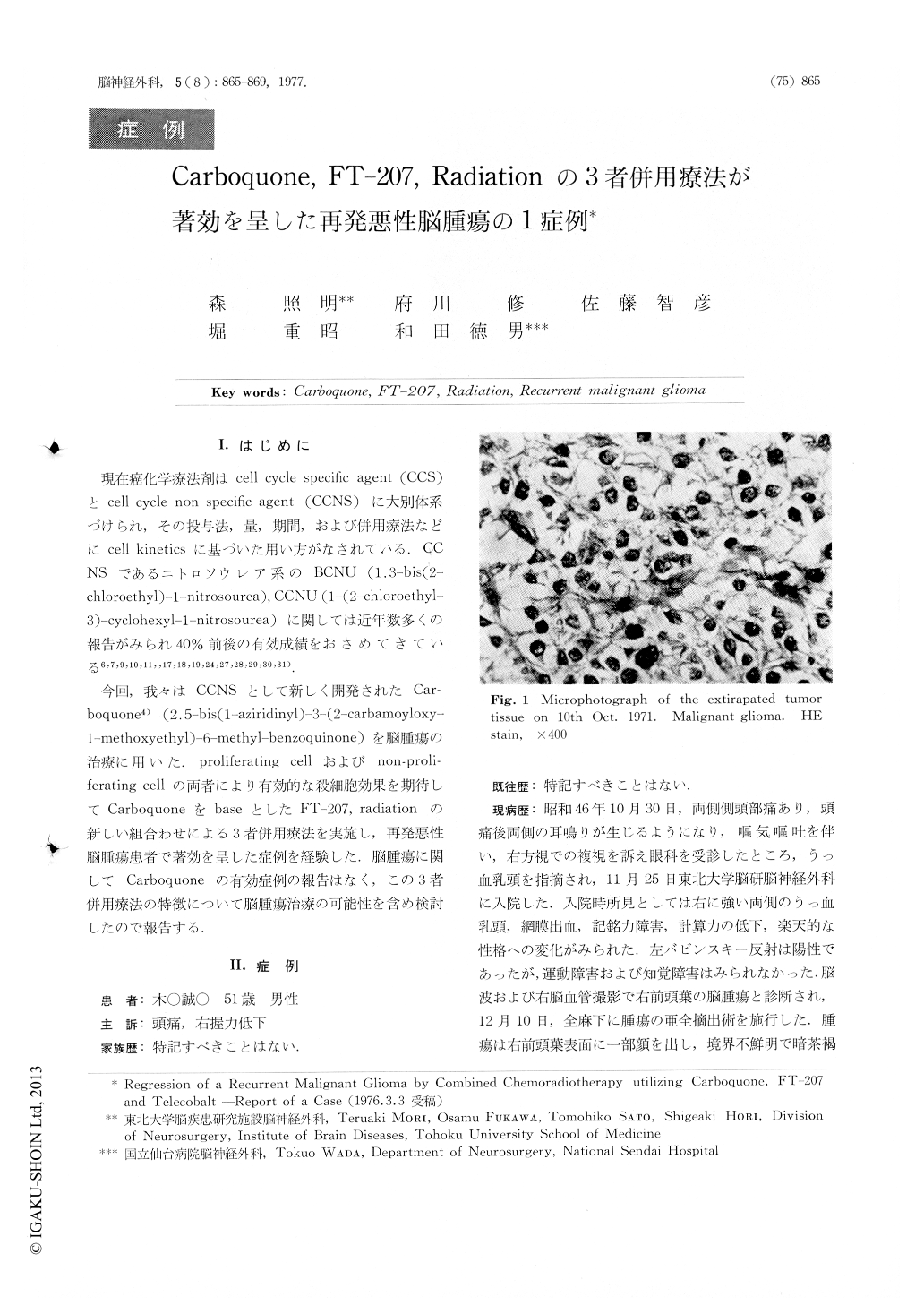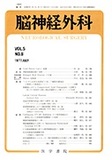Japanese
English
- 有料閲覧
- Abstract 文献概要
- 1ページ目 Look Inside
Ⅰ.はじめに
現在癌化学療法剤はcell cycle specilic agent(CCS)とcell cycle non specific agent(CCNS)に大別体系づけられ,その投与法,量,期間,および併用療法などにcell kineticsに基づいた用い方がなされている.CCNSであるニトロソウレア系のBCNU(1.3-bis (2-chloroethyl)-1-nitrosourea),CCNU(1-(2-chloroethyl-3)-cyclohexyl-1-nitrosourea)に関しては近年数多くの報告がみられ40%前後の有.効成績をおさめてきている6,7,9,10,11,17,18,19,24,27,28,29,30,31).
今回,我々はCCNSとして新しく開発されたCarboquone4)(2.5-bis(1-aziridinyl)-3-(2-carbamoyloxy-1-methoxyethyl)-6-methyl-benzoquinone)を脳腫瘍の治療に用いた.proliferating cellおよびnon-Proliferating cellの両者により有効的な殺細胞効果を期待してCarboquoneをbaseとしたFT-207,radiationの新しい組合わせによる3者併用療法を実施し,再発悪性脳腫瘍患者で著効を呈した症例を経験した.
Current chemotherapy of malignant brain tumor bases on cell kinetics. Chemotherapeutic agents are devided into two, cell cycle specific (CCS) and cell cycle non specific (CCNS) agents. A case of malignant glioma successfully treated by chemo-radiotherapy using a new combination of the two agents, Carboquone (CQ) as CCNS, which has not appeared in literature, and FT-207 as CCS is reported. A malignant glioma in the right frontal lobe in a case of 51-year-old male was removed subtotaly on Dec. 10th, 1971 in our clinic.

Copyright © 1977, Igaku-Shoin Ltd. All rights reserved.


